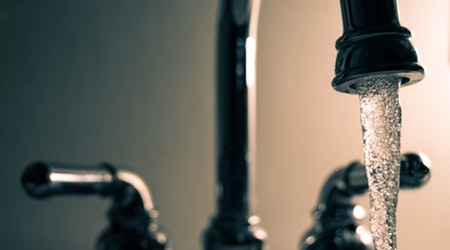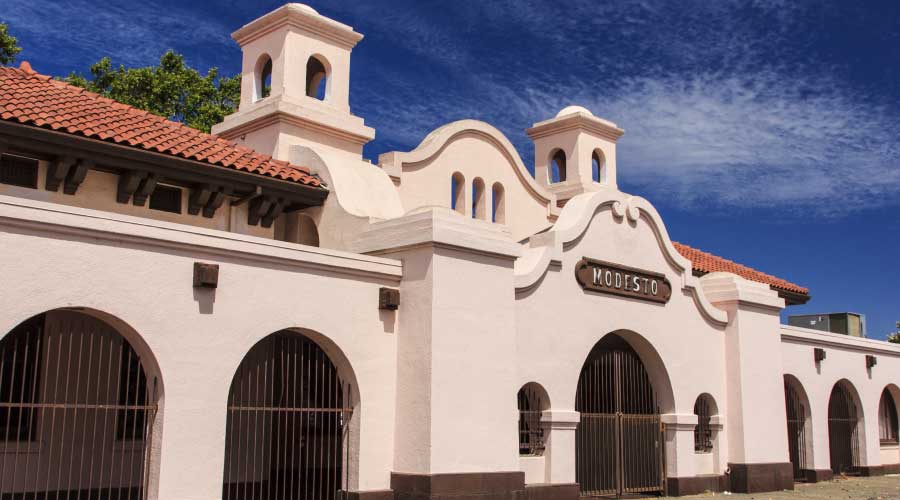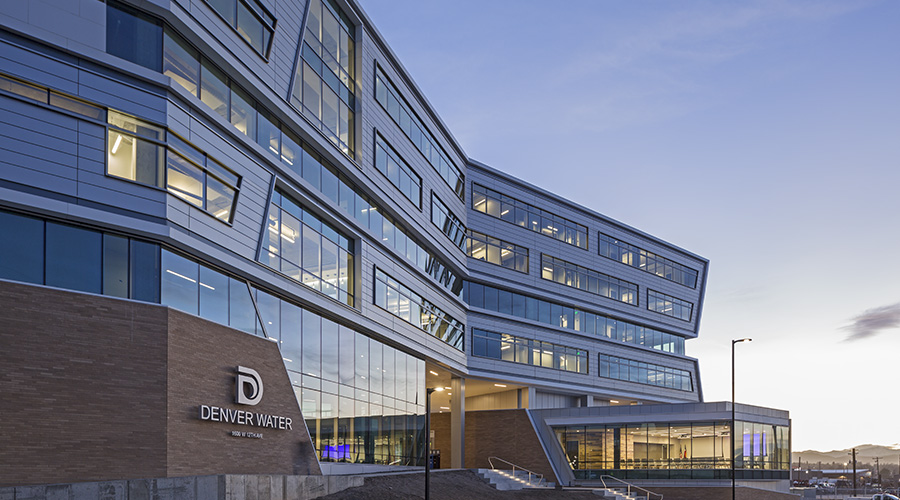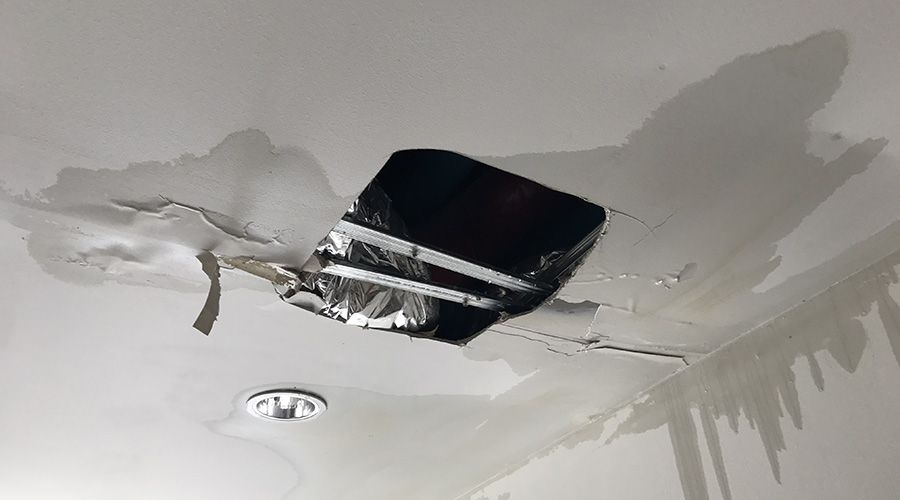Outlook
Rising need for water efficiency
A drought in the Western United States has water professionals and facility executives in the region treating water as a precious resource. But the truth is, the drought is only one reason to worry about the water supply and its rising cost. Overuse, abuse, poor quality, treatment problems, water mismanagement and failing infrastructure team up to make water a precious, and increasingly expensive, resource for the entire country.
Addressing these problems will affect everyone using water, including buildings owners and occupants. Even though agriculture accounts for 39 percent of water use in the United States, commercial buildings comprise nearly 15 percent nationally. In California, according to a Pacific Institute study, urban water use, which encompasses commercial, residential and industrial buildings, accounts for 20 percent of all water used.
Talking about water use on a national or even a regional basis, however, misses the intricacies of the looming water problem. “Like politics, all water is local,” says Amy Vickers, principal with Amy Vickers and Associates, a water engineering and consulting firm. While concerns about the availability of water may be the problem in some areas, America’s increasing development and pollution are putting stress on even water-rich regions like the Northeast, she says. Older cities may be plagued with problems in treatment and distribution while newer cities face problems finding new sources of water.
One thing cities and buildings have in common across the country is water mismanagement. All this makes a resource that once seemed too inconsequential a cost to manage another important controllable cost, like energy, in building operations.
And a managed cost it should be. Shortages and infrastructure constraints are causing water professionals inside and outside utilities to begin writing the message on the wall: Prepare for higher costs by finding ways to become more water efficient now. The only question: Will building owners read it?
A Shared Problem
While the U.S. average annual rainfall has been edging up since 1900, the periods of high and low precipitation have become more extreme. This may be most evident in the West. The West, including much of the Great Plains and Rocky Mountain states, actually enjoyed a decade of unusually high rainfall in the 1990s. Today, as this region enters its sixth year of drought, it appears to scientists that drier precipitation patterns may be returning.
Even in a good year, Las Vegas receives very little rain — about 5 inches annually. It relies instead on the water flowing down the Colorado River and into Lake Powell and Lake Mead. The river itself, the source of water for seven states, relies on a healthy snow pack in the mountains to maintain its flow. That snow pack has been less than normal, and the subsequent flow of the river is half of what it has been in recent times. As a result, Lake Powell has lost half its water and Lake Mead is at 60 percent capacity. The water level is getting close to the level of the city’s water intake pipes, potentially shutting down the water system. In addition, these reservoirs are perilously close to not being able to provide enough water to generate electricity. A response to this situation means overcoming a generation of bad habits.
Water use in the West is unusually high. Take Phoenix, for instance. Water use per household is twice what it is in Seattle and Tampa, Fla. Residents in this parched landscape are using 220 gallons per person per day. Californians are almost as thirsty, using on average 185 gallons per person for nonagricultural, urban purposes. The U.S. average is about 101 gallons.
“A 10-year-old can do the math and quickly figure out what the problem is here,” says Vickers, author of a text on water conservation strategies, Handbook of Water Use and Conservation.
Legislators in Arizona have started to react to water problems. They recently passed a bill that requires “every effort” be made to put waterless urinals in state buildings; the governor has signed the measure. This is a step in the right direction, Vickers says. She is meeting with the Arizona governor’s Drought Task Force to work out “aggressive solutions” to reduce water demand in that state’s cities.
While not exactly following the rule of supply and demand, water rates are beginning to go up, but prices can only go so high before a region’s economy is upset, says Doug Bennett, conservation manager for Southern Nevada Water Authority (SNWA). Because something has to be done, state and utility officials in Utah and Arizona are targeting demand to better control water because new supply is expensive — politically and financially. Nonetheless, SNWA is looking to tap new in-state sources of water to meet the district’s demand, but hand-in-hand with that is conservation.
Bennett says SNWA has approved a $32 million program for 2004 and 2005 to curtail water use. While that may seem like a lot of money, it’s much cheaper than trying to find new sources of water, he says. The program is paid for by a fee for new hook-ups to the water system. The program combines education and rebates for water-efficient technologies, such as low-flow toilets and water-efficient showerheads and faucets.
Controlling demand isn’t likely to include one of the seemingly largest water users in Las Vegas — the glitzy, gushing fountains. This is not an oversight. Compared to the water used and wasted in commercial building air conditioning systems — principally cooling towers and refrigeration equipment — the fountains are a spit in the ocean, Bennett says.
Scarcity or Waste?
Problems with water aren’t limited to the arid West, however. Seattle, normally thought of as a rainy landscape with lush vegetation and roiling streams and rivers, actually has more in common with the Mediterranean countries than equatorial ones. Annually about 30 inches of precipitation falls on the city’s watershed — about as much rain as Wichita, Kan., or Omaha, Neb., gets — but it falls in the fall and winter months. So Seattle is learning how to manage its water to help make it through the highs and lows of a year. Driven by the threat of high cost for tapping into additional sources of water, the city has managed to meet all its demand for the last 10 years by conservation and good management. Despite projected growth, the city expects to do the same for the next 10 years, says Al Dietemann, manager of resource conservation for Seattle Public Utilities.
Sometimes even having the rainfall doesn’t absolve a city from water problems. Boston, despite receiving 10 inches more rain a year than Seattle, was losing a lot of water to waste and mismanagement. Thanks to a thorough plan to fix leaks and cut down on waste, the city has been able to avoid building a dam on the Connecticut River, sparing the environment and saving ratepayers more than a half-billion dollars.
The country as a whole faces the problem of how to best manage water, but different areas face the problem for different reasons. This poses the question of what is the biggest concern with water: scarcity or waste?
The answer, Vickers says, is both. Vickers says there’s plenty of water to meet water needs, but there’s not enough water to meet wants.
For example, the headlines about the West’s water woes and ongoing drought often fail to mention that there is significant waste. In fact, she says, half of the water used in that arid climate is for lawns.
No matter who wastes the water, everyone shares in the pain because all market sectors share the same resource. Waste in the residential sector could mean higher costs in the commercial sector, she says. And most commercial building owners can’t negotiate long-term contracts with their water utility to get a better deal, the way they can with energy. As a result, as more demand is put on the water and sewer systems, all ratepayers can expect to pay more.
The Cost of Saving Water
Like many older cities in the nation, New York City is dealing with infrastructure problems complicated by regulatory issues that are leading to higher water and sewer costs. Cities like New York with combined sanitary and storm sewer are often forced to dump partially treated or untreated waste water into receiving waters — connected lakes, rivers or the oceans. New York has done this as has Boston. Milwaukee most recently has been forced to dump raw and partially treated sewage into Lake Michigan following days of heavy rain.
These events have raised the ire of residents and of state and federal government officials and led to cries to correct the problems. The result is policies and regulations that are or could be increasing costs.
“Water and sewer rates are going up — about 5 percent a year indefinitely,” says Warren Liebold, director of technical services and conservation, Bureau of Customer Services, New York City Department of Environmental Protection. One big reason this increase is projected for New York is a planned $16 billion capital project to help deal with overflow problems. But increased efforts to treat sewage to meet higher and higher levels of water quality as well as increased efforts to protect New York’s upstream watersheds are also contributing to higher sewer and water costs.
New York has taken steps similar to Boston to stem the overflow problem. An incentive program in the 1990s to encourage the installation of low-flow toilets for multifamily developments proved successful, Liebold says. The city may reinstitute the program to capture other building owners, especially in the hospitality and restaurant markets. Without programs like this to address the problem, water and sewer rates could go even higher. In fact, the cost of finding new sources of water is three times the cost of saving the existing supply.
The Las Vegas area has cut 2003 water demand by 15 percent — a year predicted to see growth in demand.
In Seattle, higher water and sewer rates also can be attributed in part to the city’s 100-plus-year-old infrastructure, Dietemann says. Despite its water woes, Seattle’s water program has been successful.
“We draw no more water now than we did 10 years ago,” he says, “Compare that to energy, and it’s easy to see this is a pretty big achievement.”
Conservation is working in many cities to help solve water and sewer problems and hold rates down. But water efficiency measures can also save money for the owner.
“We are taking the message to building owners that many water-saving strategies have a two-year payback,” Dietemann says. “It’s true that water is a much smaller line item on the operating budget than energy is, but the savings are also easier and less costly to achieve.”
Untapped Savings
Water savings for facilities may be an untapped resource. While water may be only 1 to 3 percent of an operating budget, Dietemann says, there are still very cost-effective water projects. Whereas in organizations that have already tackled the high-return projects, many energy-saving upgrades have much longer payback periods. On top of that, moving water takes energy as well. So the less water moved, the less energy used.
Water efficiency strategies really save building owners money two ways, Liebold says. Owners save on water bills immediately and help contain or slow increases in future rates.
Vickers agrees.
“Of course we have to look at water from both an economic and environmental view,” Vickers says. “That’s why I think water efficiency makes so much sense; the better we are at using water efficiently, the less it will cost all of us to use and build new infrastructure, which also reduces adverse impacts on the environment.”
Tracking Down Water Waste in a Facility
Water leaking from pipes or lost in a cooling process is an unnecessary but all too common expense.
Almost every building has a water problem, says Amy Vickers, principal with Vickers and Associates and author of the Handbook of Water Use and Conservation. “One of the first things we do is look for leaks in the system.”
One way to determine if water leaks are a problem is to track water bills over time. Compare how much water is used for several billing periods and look for any trends. If numbers increase, it could be due to demand, improperly operating equipment or leaks.
If a trend is noticed, the next step is to do a water audit, she says. That includes collecting meter-reading records for a period of time, doing a walk-through of the facility to gather information on water-using equipment, fixtures and activities, and then collecting flow rates and estimated water use for these. The result should be a balance sheet that identifies and quantifies water use at the facility.
The final step is to target areas where cost-control strategies can be taken. Some facilities have reduced water bills by tens of thousands of dollars — not including reduced sewer costs, Vickers says.
|
Saving Water and Cooling Costs
When New York City called for water rationing during drought periods in the 1980s, it called upon commercial building owners to cut water use by 10 percent. For most large commercial buildings that meant turning the thermostat up, says Warren Liebold, director of technical services and conservation, Bureau of Customer Services, New York City Department of Environmental Protection.
Cooling requires immense amounts of water. Besides the obvious waste of once-through cooling equipment, cooling towers can use and lose a lot of water. For instance, according to the Handbook of Water Use and Conservation by Amy Vickers, a tower can lose 2.4 gallons per minute of water to evaporation for every 100 tons of cooling. Even more water is lost through bleed-off operations.
Better managing water use in cooling can save water and sewer costs and improve energy efficiency of the system, says Vickers, principal with Vickers and Associates. The first step is to control bleed-off. This can be done by adjusting the chemistry of the water to allow higher concentrations of contaminants and to operate bleed-off continuously — releasing and replacing small amounts of water — rather than periodically when large amounts of water are taken out and then made up with fresh water.
|
Related Topics:












